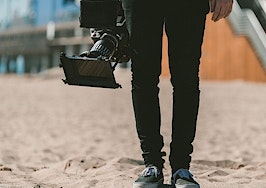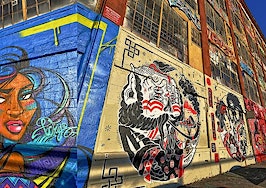Last week, the U.S. Supreme Court declined to consider an appeal from a real estate developer asking the court to review a ruling that awarded $6.75 million to 21 artists whose work at the iconic 5pointz graffiti mecca was destroyed after the developer whitewashed the building as it sought to convert the property into high-end condos. The decision handed the artists a final victory, cementing in place a lower court ruling that determined the graffiti art fell under the “recognized stature” provision of the Visual Artists Rights Act (VARA).
The outcome of this seven-year legal battle may have some property owners and investors wondering how they can prevent something similar from happening to them. Inman reached out to several legal experts to ask what steps property owners and investors can take to avoid running afoul of VARA and how worried they should or shouldn’t be about the court’s ruling.
What is the Visual Artists Rights Act?
The Visual Artists Rights Act of 1990 is a federal copyright law and includes statutes “to prevent any intentional distortion, mutilation, or other modification of that work, which would be prejudicial to [the artist’s] honor or reputation, and any intentional distortion, mutilation, or modification of that work is a violation of that right, and to prevent any destruction of a work of recognized stature, and any intentional or grossly negligent destruction of that work is a violation of that right.”
VARA was enacted in the wake of the removal of Tilted Arc, a controversial public art installation by sculptor Richard Serra, which stood in the middle of Manhattan’s Federal Plaza, according to Armand Terrien, a licensed New York attorney based in Paris and specializing in international disputes and art law.
“The purpose of the statute was to ensure that artists’ rights stood a fighting chance against property rights by granting artists the right to prevent intentional modification to their art, or seek damages if that right is not afforded to them,” Terrien told Inman via email.
VARA only recognizes attribution and integrity as legal causes of action, according to Braden Perry, a regulatory and government investigations attorney with Kansas City-based Kennyhertz Perry, LLC.
“Attribution includes the rights to claim authorship of a work, to prevent attachment of an artist’s name to a work which he did not create, and, where there has been a subsequent distortion, mutilation, or modification of the work prejudicial to the artist’s honor or reputation, the right to disclaim authorship and to prevent identification of the artist’s name with the work,” Perry told Inman via email.
What kind of art does VARA apply to?
VARA only applies to certain types of work, according to Terrien and Perry.
“VARA covers only the limited, fine art categories of ‘works of visual art,’ which include paintings, sculptures, drawings, prints, still photographs produced for exhibition,” Perry said.
“Within this group, only single copies or signed and numbered limited editions of 200 or less are actually protected. VARA does not apply to works made for hire, nor does it cover any work not subject to general copyright protection.”
Site-specific art is also not covered and it only applies to works of “recognized stature,” a term not defined in the statute, according to Terrien.
“The more renowned the artist, the more likely the work will have ‘recognized stature’ (and, presumably, the less likely the owner will want to take it down), the rest is open to interpretation in litigation,” he said.
Terrien added that any property owner is subject to VARA, whether the art is placed on the wall before, or while, the owner owns the property.
What can I do to ensure this doesn’t happen to me?
Legal experts emphasized the importance of owners and artists negotiating terms and having a written contract to set expectations.
“Regarding 5Pointz — this is a warning shot for all real estate developers. Prior to 5Pointz, it was unclear what protection if any, unauthorized street art (i.e., graffiti) possess under VARA,” Perry said.
“The best course of action for real estate developers would be to deny any requests made to include artwork on their real estate. Also, any building owner authorizing street art should ensure they get a waiver by both the owner and the artist that specifies the work may be subject to destruction, distortion, mutilation, or other modification.”
Matthew V. Wilson, licensed Georgia attorney at Arnall Golden Gregory LLP, added, “[P]roperty owners and artists should always negotiate these matters on the front-end and reflect that agreed upon understanding in a written contract.”
Still, legal experts emphasized that property owners that have murals or other street art attached to their property have a “very light burden” under VARA.
If a property owner intends to alter an artwork, “all the property owner must do is provide ‘notice’ at the artist’s last-known address and wait 90 days for the artist to remove the art at their own expense,” David Reischer, a licensed New York attorney and CEO of LegalAdvice.com, told Inman via email.
“The federal jury ruled in favor of the artists in November 2017 in the 5Pointz case because the defendant ‘willfully’ disregarded this requirement under the VARA. The VARA law protects street art and only imposes a modest restriction on property owners. A property owner may not simply destroy the art work of another without providing the required 90 days notice.”
When in doubt as to whether an artwork is protected under VARA, property owners should just go ahead and give the 90-day notice and wait it out, according to Terrien.
“In addition, if they commission the work, they can exclude the application of VARA from their contract with the artist,” he said.
Is there anything a real estate investor can do to discourage artists from using their building as a canvas in the first place?
“Seek a cease and desist order or injunction, if they realize that artists are working on the building, but that is likely toothless, as such artworks are completed rapidly, and oftentimes in secret,” Terrien said.
How likely is this to happen to me?
Litigation surrounding VARA remains rare, according to Terrien. “[A]rtists oftentimes do not have the funds, or do not want to risk losing future commissions,” he said.
Ryan Reiffert, a licensed corporate attorney in San Antonio, Texas, told Inman he would not foresee or expect courts in many other places to apply VARA to the same extent the court in the 5Pointz case did.
“VARA is principally about attribution and integrity as an extension of copyright. Applying it to graffiti is not something I would expect to see very often, except maybe in the case of a similarly expansive and impressive piece of graffiti art (I don’t know that one similar enough even exists!),” he said via email.













